Carbon Connects
- Overview
- What we do
- Events
- News
- Pilot Sites
- Site Emission Tool
- PUBLICATIONS
- C-Toolbox
- Final Conference
- Results
Project Summary
WELCOME!
Carbon Connects aims to reduce the high carbon footprint of peatland soils in Northwest Europe by introducing new bio-based business models developed for sustainable land management practices.
Peatland restoration is an important component of the world’s journey to net-zero carbon emissions.
When healthy, peatlands are incredible carbon stores and potential carbon sinks – yet, if allowed to degrade, they threaten biodiversity, release pollutants into the environment and thwart climate change
mitigation and adaptation goals everywhere.
Join us on our journey - read, learn, share and get inspired to protect peatlands!
#PeatlandMatters
NEW:
Download the booklet: Unlocking Financial Opportunities for Peatlands in NWE
Financing mechanisms in Europe for restoring peatlands
Growing oyster mushrooms on cattail
PUBLICATION: The basis of a carbon credits certification for restoration & low carbon farming on peatlands
POLICY BRIEF CCONNECTS Jan2022
PUBLICATION: TOWARDS A CARBON CREDIT & BLUE CREDIT SCHEME FOR PEATLANDS -> Watch the launch
Value Chain Analysis in the Region of the UK Pilot Sites
The first-ever Peatland Pavilion at UNFCCC COP26
Peatlands Across Europe: Innovation & Inspiration Guide
C-TOOLBOX
Find out more
PROJECT VIDEO EN GE NL FR
PROJECT BROCHURE EN GE NL FR
PROJECT OVERVIEW EN
PROJECT PUBLICATIONS HERE
SET - CALCULATE YOUR OWN SITE EMISSION HERE
DISCOVER OUR PILOT SITES HERE
MONTHLY UPDATES HERE
Follow us on Twitter and LinkedIn
Calculate your own site emission
Project Partners
-
The Rivers Trust
Rain-Charm House, Kyl Cober Parc, Stoke Climsland
Callington, Cornwall
PL178PH
United Kingdom -
European Landowners Organization
67 Rue de Trèves
Brussels
b-1040
Belgium -
Association of the Chambers of Agriculture of the Atlantic Area
1 Maison d’agriculture, Rue P.A. Bobierre – La Géraudière
Nantes
44939
France -
Philipps-University Marburg
10 Deutschhaustraße
Marburg
35032
Germany -
Technological University of the Shannon
Moylish Park
Limerick
V94E8YF
Ireland -
Flemish Land Agency
Koning Albert II-laan 15 - 1210 Brussels
-
Van Hall Larenstein University of Applied Science
26a Larensteinselaan
Velp
6882CT
Netherlands
Lead partner
| Organisation | Address | Website | |
|---|---|---|---|
| Van Hall Larenstein University of Applied Science |
26a Larensteinselaan Velp 6882CT Netherlands |
tamara.hofs@hvhl.nl | https://www.vhluniversity.com/about-us |
| Name | Contact Name | Country | |
|---|---|---|---|
| The Rivers Trust | Rob Collins | rob@theriverstrust.org | United Kingdom |
| European Landowners Organization | Anna De Boeck | anna.deboeck@elo.org | Belgium |
| Association of the Chambers of Agriculture of the Atlantic Area | Pascal Dagron | contact@ac3a.chambagri.fr | France |
| Philipps-University Marburg | Julius Meyer | julius.meyer@geo.uni-marburg.de | Germany |
| Technological University of the Shannon | Seamus Hoyne | seamus.hoyne@lit.ie | Ireland |
| Wear Rivers Trust | Peter Nailon | peter.nailon@wear-rivers-trust.org.uk | United Kingdom |
| Flemish Land Agency | Edgard Daemen | edgard.daemen@vlm.be | Belgium |
| Durham County Council | Paul Leadbitter | pleadbitter@northpenninesaonb.org.uk | United Kingdom |
| Radboud University Nijmegen | Christian Fritz | christian.Fritz@ru.nl | Netherlands |
| Waterschap Aa en Maas | Gert-Jan van Duinen | G.vanDuinen@science.ru.nl | Netherlands |
| ILVO (Institute for Agricultural and Fisheries Research) | Greet Ruysschaert | Greet.Ruysschaert@ilvo.vlaanderen.be | Belgium |
Carbon Connects: the initial project
The carbon Connects Interreg project aimed to reduce 50% of the unnecessarily high CO2 emissions caused by traditional practices on agricultural peatlands by:
- Promoting alternative practices of wet agriculture to protect the farmer and the environment against environmental consequences of climate change. In low lying peatlands this could be done by raising water levels and introducing alternative crops and/or livestock adapted to wet conditions.
- Facilitate the transformation in land use to wet agriculture, CConnects developed new business models and implemented these in different pilots.
- Involve a wide range of stakeholders: local authorities, research institutions, farmers, and landowners, to conserve and enhance wetland ecosystems by reducing emissions by about 1600-3200 ton per year on pilot sites across N-W Europe with a total surface of around 80 ha.

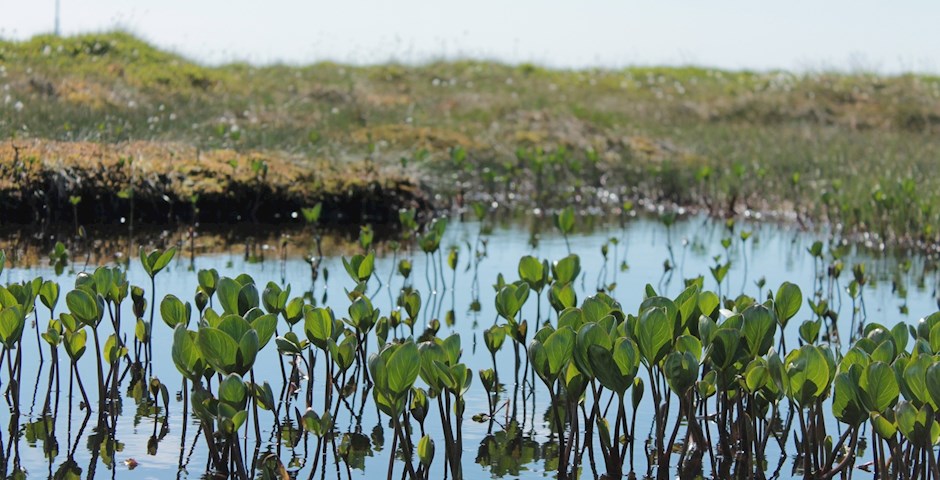

How do we do this
The project created an online collaborative living-lab platform and Farmer-to-Farmer learning Program to do joint plan development and implementation of wet agriculture and share best practices and knowledge in each region by peers.
- Development of a set of policy papers to scale up the required agricultural policy shift in NWE ad EU
- Development of an online toolbox for land use practices and business models, C and Blue credit accounting. We promoted a market for sustainable bio-based (innovative) construction materials, fuel sources and food products cultivated on peatland.
- Development of a carbon and blue credit scheme for wet agriculture.
- Development of pilot sites for field testing of new business models. To facilitate the aimed transformation in land use, CConnects implemented innovative business models on 8-10 pilot sites in the Netherlands, France, Belgium, UK and Ireland, jointly representing all peatland types across North-West Europe.
Capitalisation Phase
Following the initial four-years project duration, the project has transitioned into a two-years capitalization phase, dedicated to promoting financial incentives to support peatland restoration efforts. Many private companies today could invest in peatland restoration to meet their carbon offset targets, but lack connections, financial mechanisms and a sufficiently reliable framework for certifying carbon credits.
Therefore this phase of the project was primarily focused on ascribing value to peatland restoration activities by fostering dialogue between potential investors and farmers. This involved the preparation of informative reports aimed at highlighting the essential incentives required for peatland restoration. Moreover, a Market Acceleration Board has been set up within the project to initiate a dialogue on this subject. Through this approach, the Carbon Connects project has effectively established a direct connection between investors, brokers, and land managers.
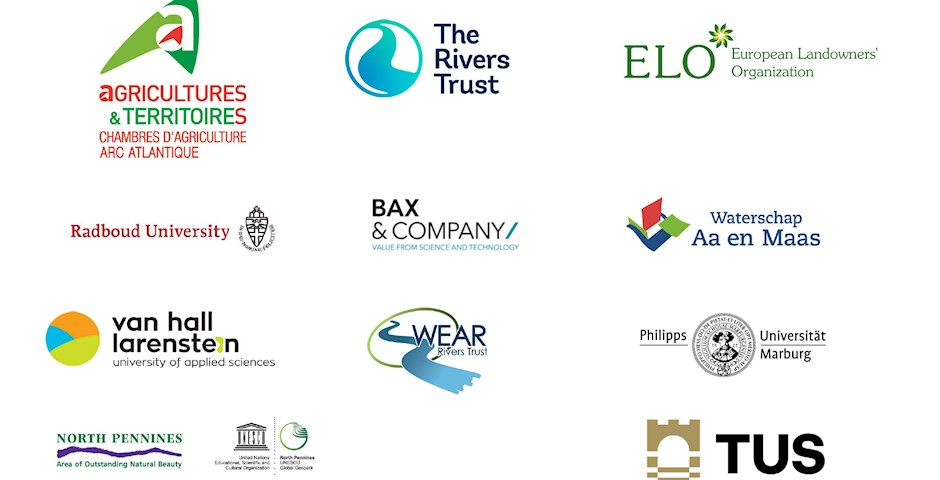
UPCOMING:
PAST EVENTS:
Power to the Peatlands (19-21 September 2023)
Sustainable farming for peatlands conference (14 & 21 December 2021)
European Biodiversity Conference (7 December 2021)
Sustainable Peatlands: A win for all (13 - 15 October 2021)
Nature-based solutions: Peatland restoration for climate and environment (21 September 2021)
Webinar: Peatland restoration, een overview (16 June 2021)
Carbon Connects and Pearl Mussel Project Joint Webinar (15 March 2021)
Carbon Farming: linking agriculture with climate and biodiversity goals
Roundtable on carbon farming ELO & Indigo (18 November 2020)
Eurosite annual meeting: zooming in on European rural site management (2-5 November 2020)
International Conference on utilisation possibilities of biomass from wet moors (18 March 2020)
European Innovation Conference on Carbon Farming (29 January 2020)
NWE - Interreg Impact Event (4-5 December 2019)
7th International Symposium on Soil Organic Matter (6-11 October 2019)
Partner Meetings:
2023 (UK, Belgium)
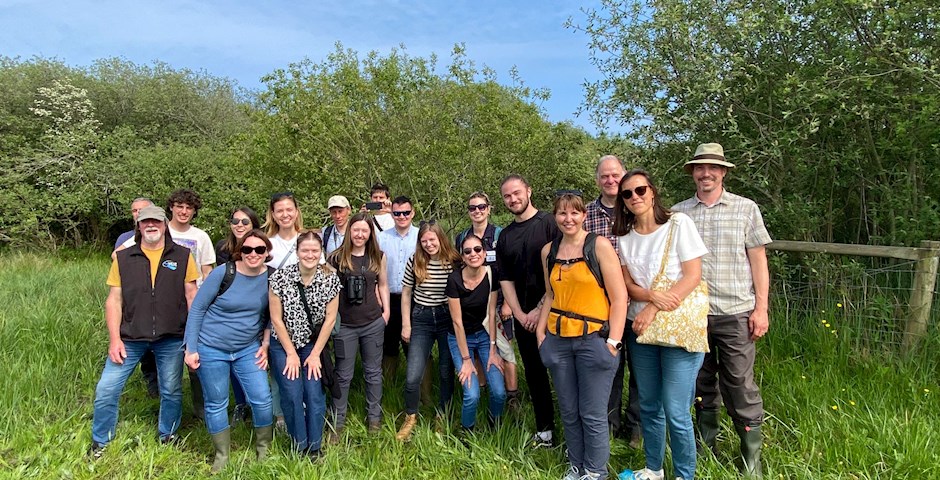

2022 (Ireland, Germany)
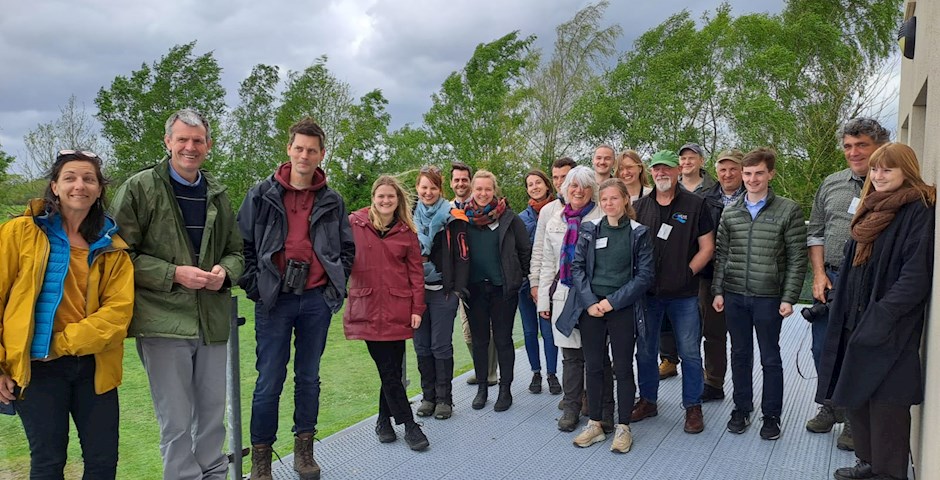

2021 (online, final conference The Netherlands)

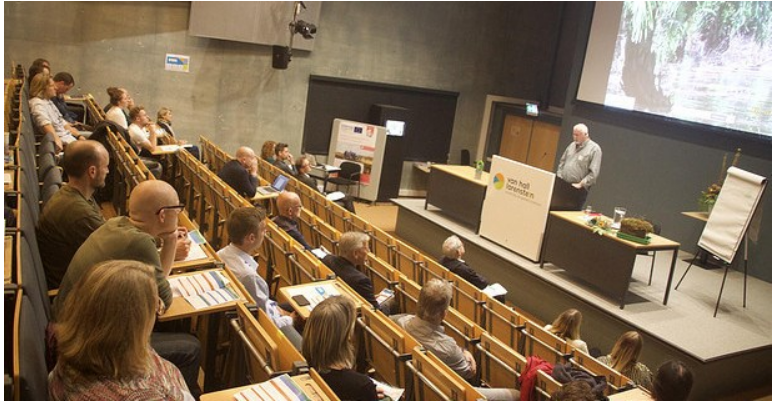
2020 (online)
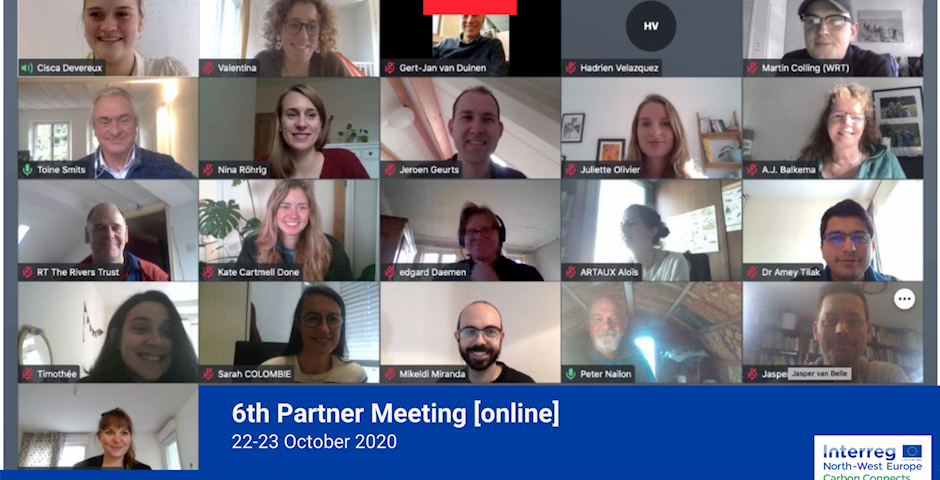
2019 (UK, Germany)
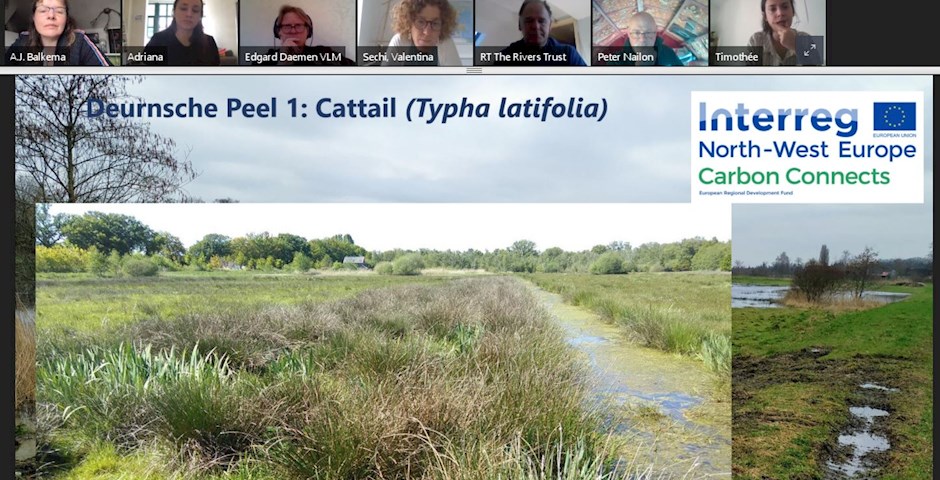
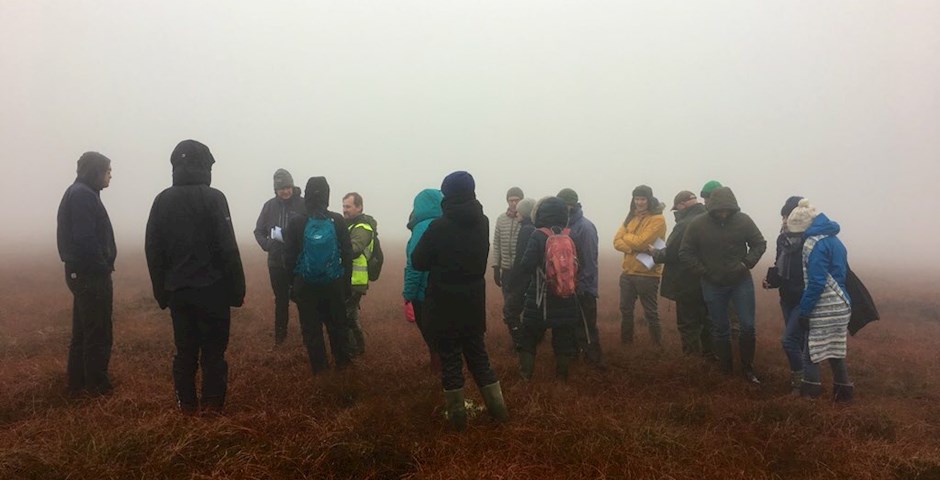
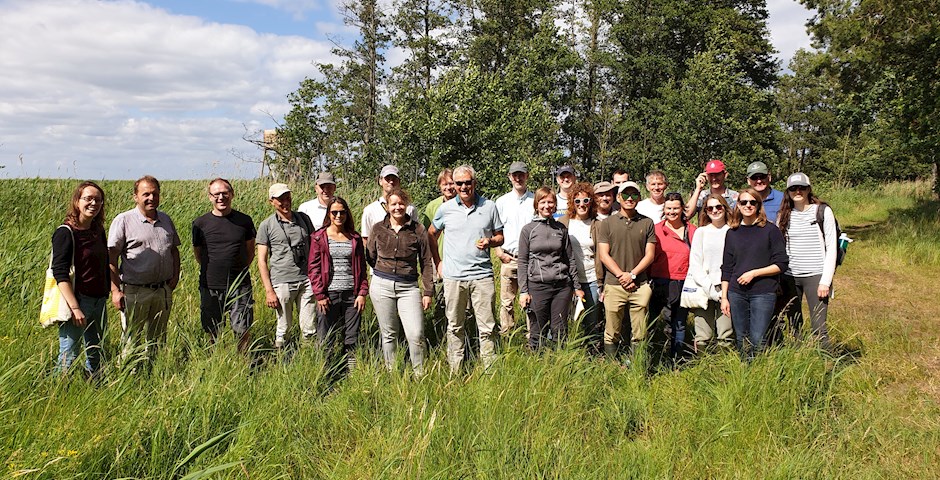
2018 (France, The Netherlands)
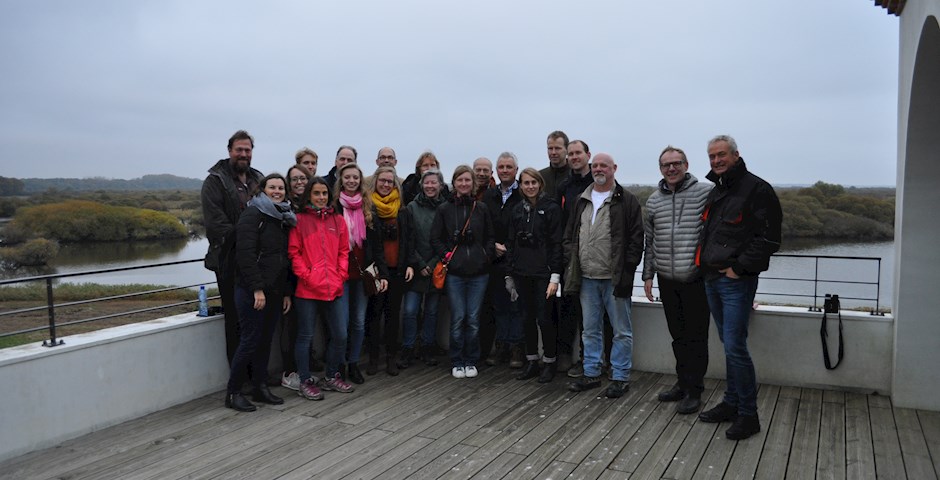

Follow our news and activities on Twitter: @CarbonConnects
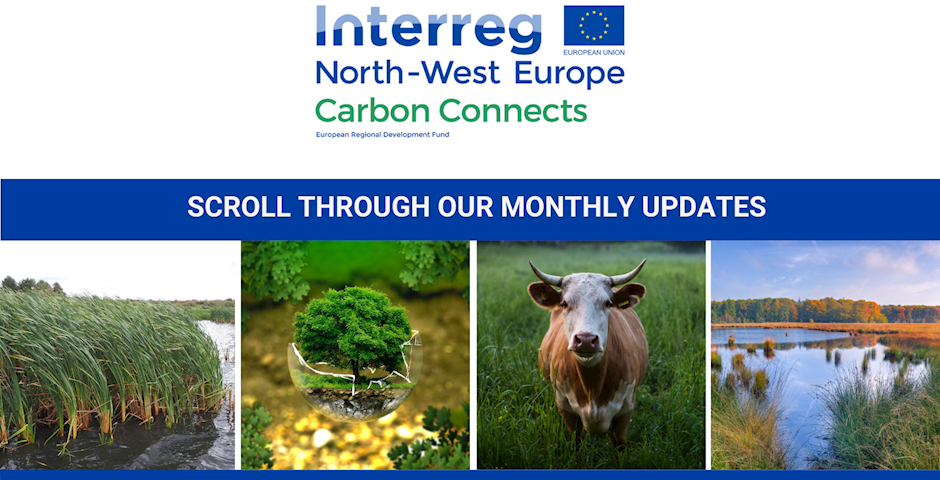
.

"Carbon and Peatlands conference" Normandy
On 7 September, the Association of the Chambers of agriculture of the Atlantic Area (AC3A) participated in the conference to present the activities at the Carbon Connects pilot sites and the tools developed in the project: peatland restoration, reintroduction of sphagnum mosses, typha cultivation, low-carbon livestock farming, site emission tool, carbon toolbox....
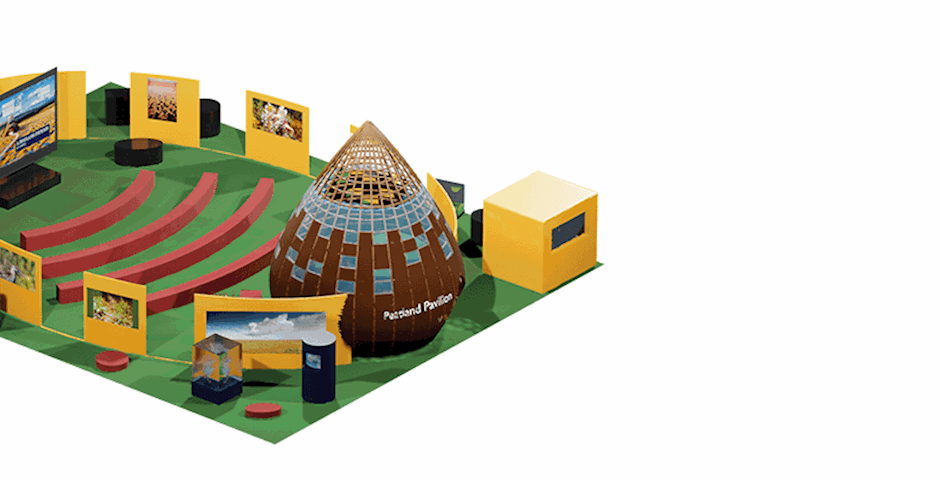
The first-ever Peatland Pavilion at UNFCCC COP26
GO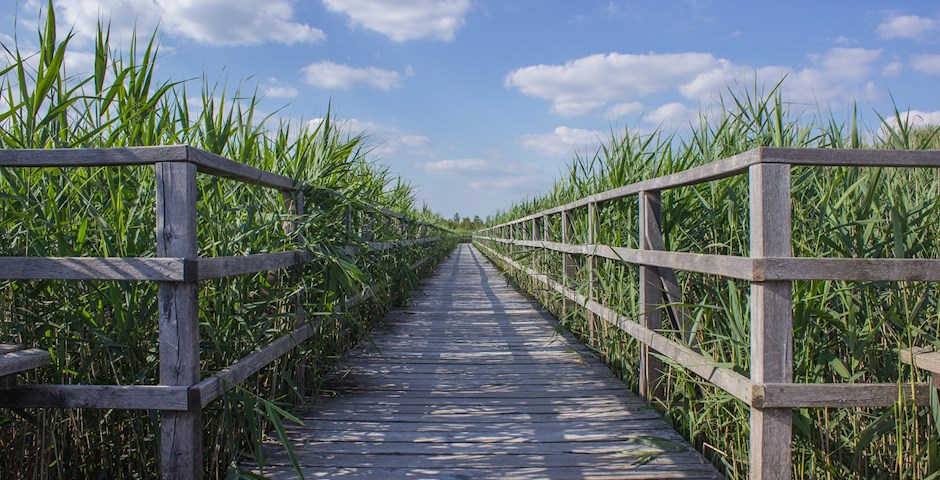
the European Commission published The final report of a two-year study on how to set up and implement carbon farming in the EU
Commission sets the carbon farming initiative in motion
The study “Technical Guidance Handbook – setting up and implementing result-based carbon farming mechanisms in the EU”, carried out from 2018 to 2020, explored key issues, challenges, trade-offs and design options to develop carbon farming. It reviewed existing schemes that reward climate-related benefits in five promising areas: peatland restoration and rewetting; agroforestry; maintaining and enhancing soil organic carbon (SOC) on mineral soils; managing SOC on grasslands; and livestock farm carbon audit. It also explored how a widespread adoption of carbon farming can be triggered in the EU.
Read the Article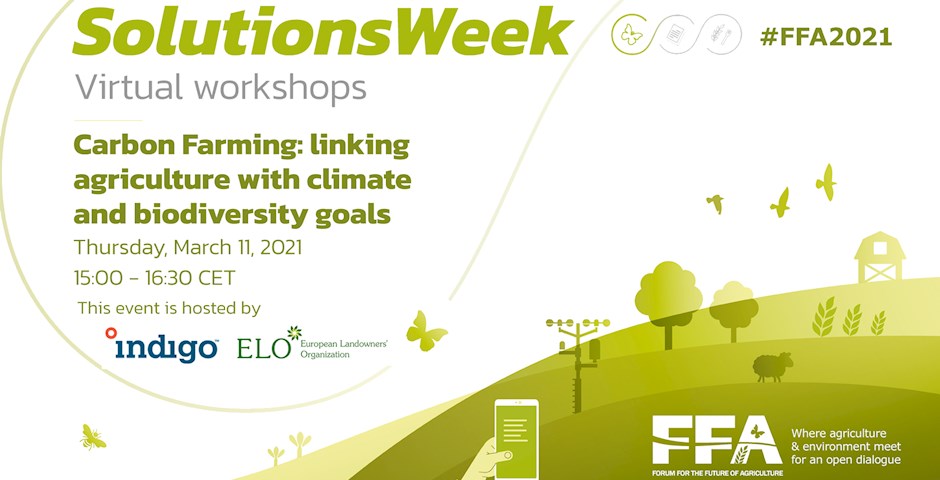
Carbon Farming: linking agriculture with climate and biodiversity goals
Date: Thursday, March 11, 2021 Time: 15:00 - 16:30 CET
Carbon Farming is put forward by as well policy makers, environmental NGO’s, landowners as farmers. It seems one of the most promising instruments to contribute to the realisation of climate and biodiversity goals in the agricultural landscape. Is carbon farming a myth or reality? During this webinar experts in the field of agricultural policy, climate, farming, certification, market development and consumer will interact and give their views on carbon farming and its possibilities. https://www.forumforagriculture.com/virtual_events/solutions-thur-pm/
Register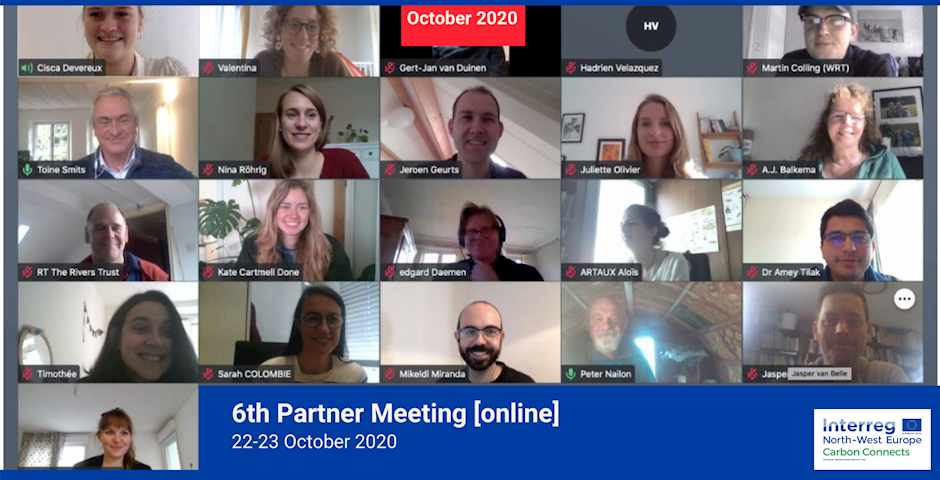
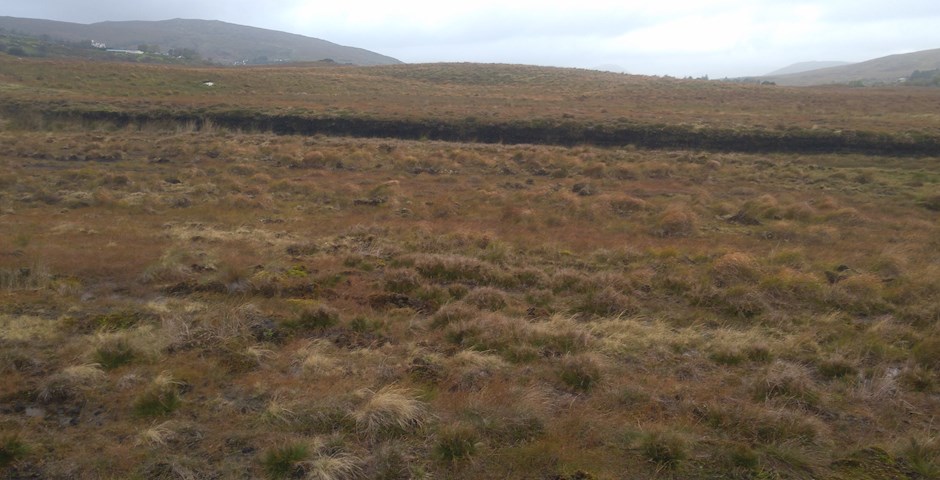
July 2020: Webinar organized by LIT 10th July
The future of Irish peatlands and future business models
LIT researchers working on the Interreg-funded Carbon Connects project hosted a webinar looking at the future of Irish peatlands and future business models, as well as work completed on the project so far.
Watch online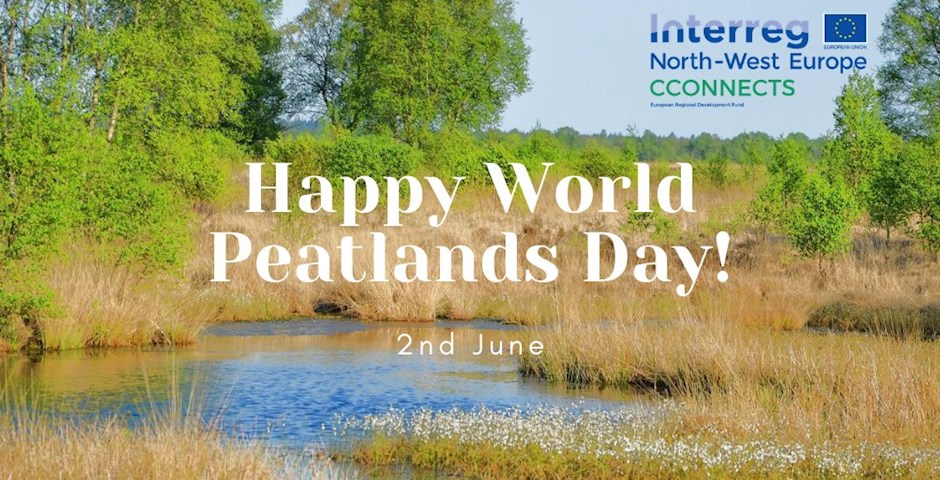
JUNE 2020: World Peatlands day!
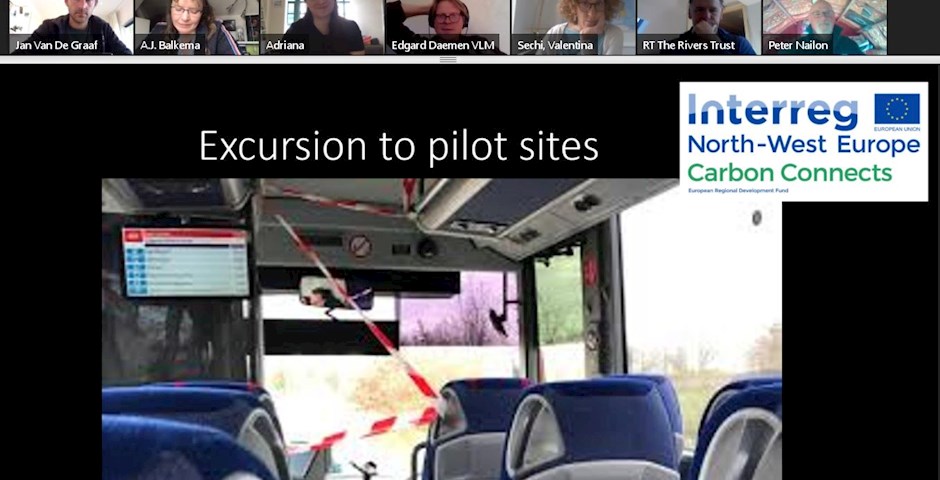
MAY 2020
Virtual 5th Partner Meeting CarbonConnects
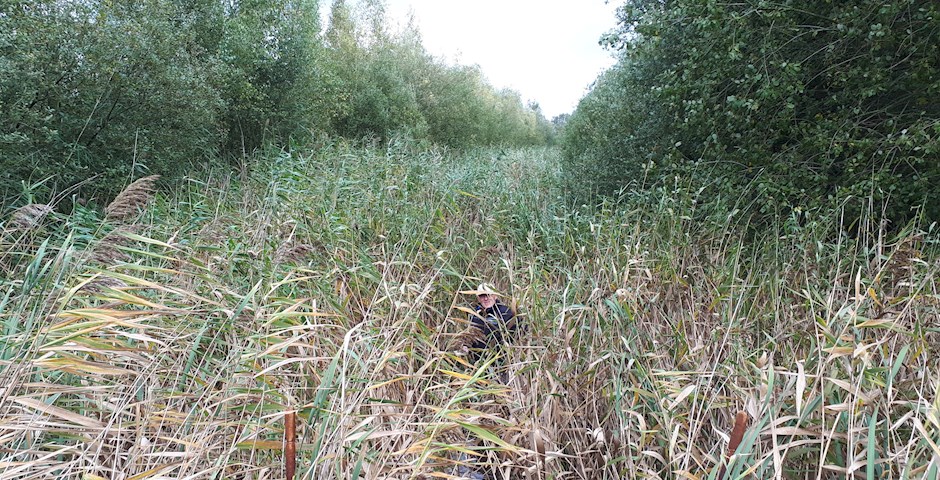
PEATLANDS IN THE EU: COMMON AGRICULTURE POLICY (CAP) AFTER 2020
NEW OPINION PAPER with the contribution of CarbonConnects
To facilitate the new environmental ambitions of the Post- 2020 Common Agricultural Policy (CAP) and to create coher- ence between agricultural and climate policies, CAP must safeguard and stimulate the preservation of carbon-rich soils through protection of peatlands. With Special thanks to Niall O'Brolchain
Read the Opinion Paper
March 2020: New science on how to estimate the effect of GHG emissions on rewetting a peat plot
NEW SCIENCE PUBLISHED Combining vegetation and water level proxies to estimate emissions
Full Article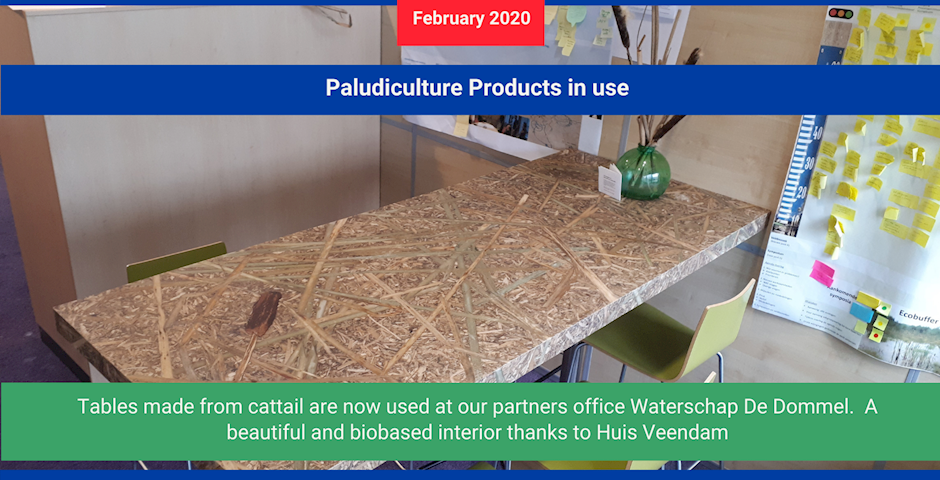
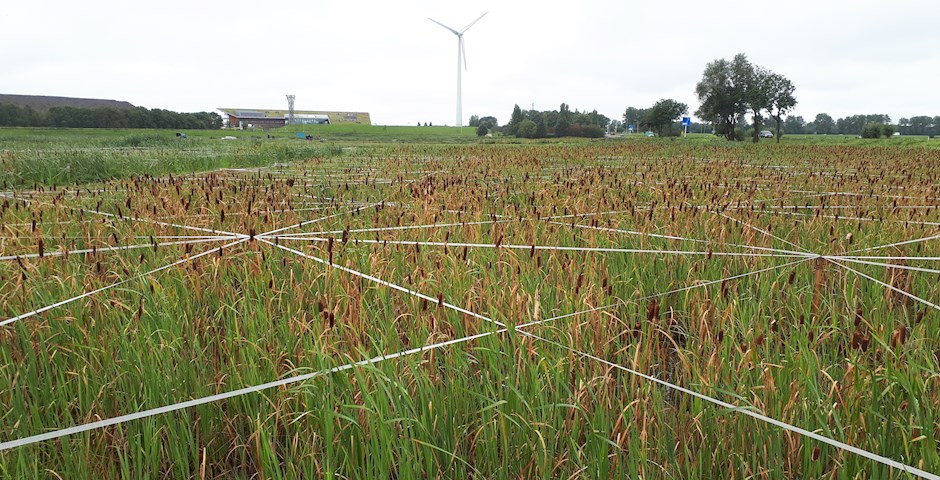
January 2020: Recognize the high potential of paludiculture on rewetted peat soils to mitigate climate change
NEW PAPER PUBLISHED
Draining peat soils leads to oxidation of the peat and soil subsidence. Rewetting peat soils appears to be a cost efficient GHG mitigation measure (Röder et al., 2015). The ideal situation would be a natural colonisation with peat forming plants after rewetting and a return to a carbon sequestrating system without harvesting. However, the productive function can often not be relinquished and paludiculture, the practice of productive use of wet and rewetted peatlands, should be considered. In paludiculture, harvesting wet crops for food, fodder, fibre and fuel is combined with the provision of vital ecosystem services (Wichtmann et al., 2016). This concept provides production opportunities for the necessary, fundamental change in land use of drained peatlands to a more sustainable, wetter land use, which should benefit both the regional economy and the climate.
Full Article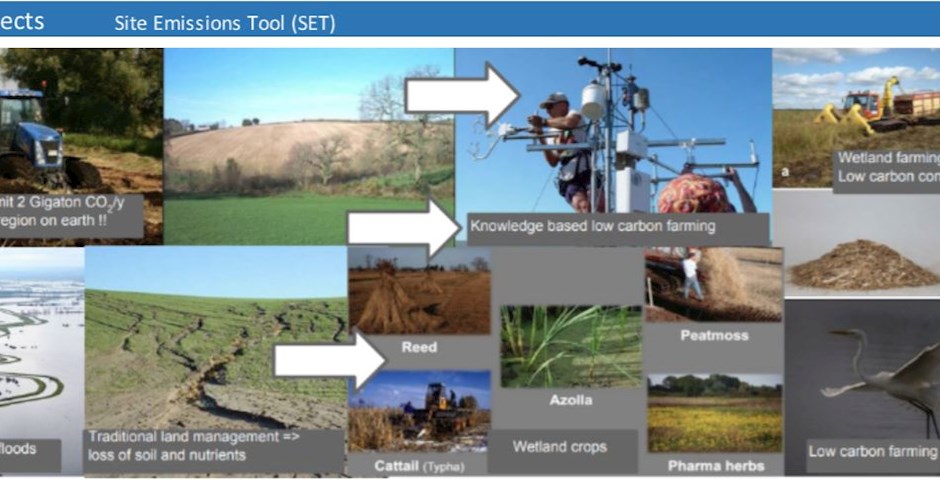
DECEMBER 2019: We developed a new tool to calculate site emissions
NEW SITE EMISSION TOOL "SET" DEVELOPED
We developed a Site Emission Tool (SET) to calculate greenhouse gas emissions of managed wetland areas! SET is a tool created for supporting decision making in the context of land management and environmentally sustainable business development in wetlands. Based on existing information on groundwater level, vegetation, fertilizing practices and feedstock intensity, and fuel use it estimates CO2 and N2O2 emissions and sequestration after an (hypothetical) rewetting plan. SET is now being trialed within Cconnects and (Interreg NSR) CANAPE, and will be available in the near future for farmers, public authorities and other stakeholders interested in calculating the greenhouse gas mission of their managed wetland areas. The tool was developed by drs. Jasper van Belle and prof. dr. Emiel Elferink with the financial support of NWE Interreg.
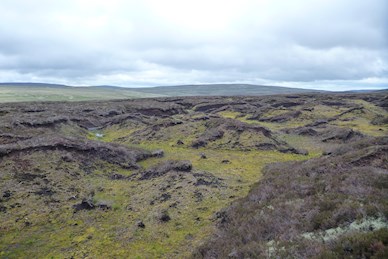
Quantifying moss moisture stresses in undrained, afforested and rewetted peatlands located in Republic of Ireland using laboratory measurements and computer modelling Amey S. Tilak,Kenneth A. Byrne AJonay Jovani-Sancho Matthew Saunders Seamus Hoyne First published: 25 October 2021
READ FULL ARTICLE: https://doi.org/10.1002/eco.2374
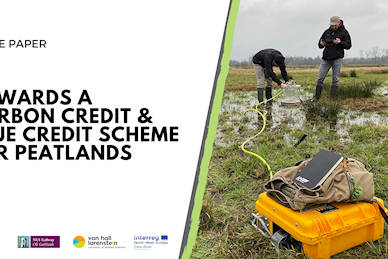
Carbon Farming on Peatlands could be great for Farmers and for the Planet – EU Report A new white paper on Carbon Credits and Ecosystem Services jointly launched by the EU Carbon-Connects & Care-Peat projects at the A3CA webinar Sustainable Farming for Peatlands, has found that with the right framework in place it should be possible to finance the restoration of damaged peatlands, implement sustainable/alternative practices on peat soils, significantly reduce Greenhouse Gas emissions and provide a good living for farmers all at the same time.
“Right at the start of the UN Decade of Ecosystem Restoration 2021-2030 and following on from the hugely successful Peatland Pavilion at COP26 two key EU Peatland Projects Carbon Connects and Care Peat have joined forces to develop a White Paper entitled TOWARDS A CARBON CREDIT & BLUE CREDIT SCHEME FOR PEATLANDS”, said Niall Ó Brolcháin of NUI Galway, the policy lead of the EU Care Peat project involving 5 European countries (IE UK NL BE FR).
The paper includes an analysis of a number of existing Peatland Carbon Credit schemes and accreditation standards and explores the potential of using Carbon Credits and other Ecosystem services to fund Peatland Restoration across Europe on a very large scale.
According to Valentina Sechi of Carbon Connects and Van Hall Larenstein University in the Netherlands, “The launch of this White Paper should provide a much-needed boost for peatland restoration in the EU where degraded Peatlands contribute more than 5% of all Greenhouse Gas emissions. Carbon Credits combined with payment for other Ecosystem Services can potentially provide farmers and other landowners with a good source of income from Peatland restoration projects. However, we have to take into account, the so-called paradox of additionality which can effectively reward bad environmental practice instead of good practice”.
The White Paper compares incomes from various types of farming common on peatlands across Europe with potential incomes from the sale of Carbon Credits and Ecosystem Services such as water storage and water purification.
Conclusions of the White Paper
1. Current farming systems do not effectively support sustainable farming in Europe and they are heavily dependent on subsidies.
2. Examples show that the sale of Peatland Carbon Credits is feasible if the right framework is put in place.
3. International accreditation standards are too expensive for small peatland projects so an easy and cheap system is needed. Examples show that a site type methodology using proxy measurements may be highly effective.
4. An integrated framework for Carbon Credits + Ecosystem Services is needed.
5. Provision of subsidies for peatland restoration and maintenance is required while subsidies exist for other activities.
DOWNLOAD PAPER
Contact: Valentina Sechi, valentina.sechi@hvhl.nl

https://www.iucn-uk-peatlandprogramme.org/events/peatland-pavilion-cop26 VISIT THE PAVILION: https://storage.net-fs.com/hosting/6147066/7/
GET TO KNOW THEM: https://www.globalpeatlands.org/
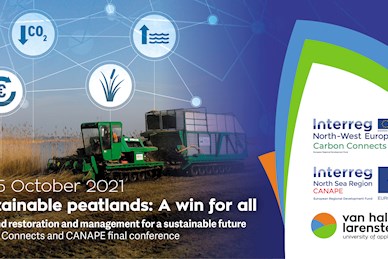
FINAL CONFERENCE CARBON CONNECTS How can we restore and protect peatlands?
This has been the subject of four years of research by the Carbon Connects and CANAPE projects. During the international symposium ‘Sustainable peatlands: A win for all’ in October, the innovative techniques, business models and policy options that have been developed over these years will be presented.
ALL CONFERENCE INFORMATION HERE
Today the European Commission published the final report of a two-year study on how to set up and implement carbon farming in the EU. Building on this study and on the input from several EU-funded projects and events, the Commission plans to launch the carbon farming initiative by the end of 2021.
More information and links to the studies HERE
Read the white paper here
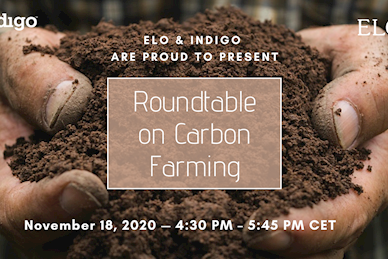
As Europe grapples with the challenge of delivering against its revised 2030 emission targets, and reaching net zero by 2050, it must consider all options available for meeting these objectives. Agriculture, often seen as a contributor to the production of greenhouse gases, now has the potential become part of the solution.
Advancements in soil management technologies, accumulated understanding of regenerative agriculture practices and greater ability to collect and analyse vast amounts of soil-related data create the unprecedented opportunity to accelerate the adoption of regenerative farm practices and transform agriculture into a cost-effective, large-scale, and reliable carbon sink. Furthermore, that transformation of agriculture into a large carbon sink can also advance a wider climate, economic and environmental agenda including greater climate resilience and food safety, more sustainable farming, and innovation and investment to drive green growth in the agriculture sector.
Capturing this opportunity requires an strong alignment of stakeholders – farmers, investors, technologists, academics, NGOs and policy-makers – to set strict environmental standards, deploy technologies to cost-effectively collect data and calculate credibly carbon benefits, design economic incentives to change farmers’ practices and catalyse large-scale investment and innovation in the sector.
This Roundtable addressed the questions of how to spark such alignment and change to grasp the opportunities presented by carbon farming, as well as how to overcome some of the potential barriers and concerns.
This debate was headed by a panel, chaired by MEP Norbert Lins, moderated by Jurgen Tack of ELO; joined by MEP Paolo de Castro; Thierry de l'Escaille of ELO and Georg Goeres from Indigo.
This paper was published by the project CINDERELLA and is based on a large-scale European field survey on paludiculture. Based on this European wetland survey, paludiculture holds a great potential to combine peat preservation, water purification, nutrient removal, and a high biomass production. Paludicrops take up substantial amounts of nutrients, and both summer and winter harvests provide an effective way to sequester carbon in a range of high-valued biomass products and to control nutrient effluxes from rewetted sites at the landscape scale.

Check out the full article: https://www.rug.nl/research/portal/files/117792023/drentsche_aa_ghg.pdf
Rewetting can effectively reduce greenhouse gas (GHG) emissions from drained peatlands. Reliable emissions estimation approaches are needed for accounting of such reductions and for evaluating the potential in terms of carbon
Here we combine vegetation and water level proxies to estimate emissions, by using bioindication of vegetation communities for water level together with the linear correlation between annual mean water level and GHG fluxes
GHG emissions are estimated using linear regression models of gas fluxes against mean annual water levels. This approach provides spatially explicit and quantitative estimation of mean annual water levels and GHG fluxes. When combined with information on spatial patterns and variances, the resulting estimations can promote recognition of the carbon co-benefits of biodiversity restoration while facilitating more site specific optimisation of management practices.

Keep Peat Wet to Reduce Flood Risks!
A student project that has recently been carried out by environmental science students at the VHL University, NL.
They looked at the moisture-absorbing capacity of peat and how this relates to the degree of degradation. Their gradation 1 is subdivided (so not degraded), 4 is strongly degraded (strongly degraded / oxidised). Veldverse, less degraded peat absorbs more water, thus potentially generating more reduction of flood risk. If you let it dry out completely, the relationship reverses: then the most dehydrated peat absorbs the most moisture, but that is only 1/3 of what unearthed and not dehydrated peat absorbed.
Conclusion: if the peat keeps wet, it can contribute to the reduction of flood risks by retaining peak showers in the soil. If you let it dry out too much, then this function of peat deteriorates considerably.
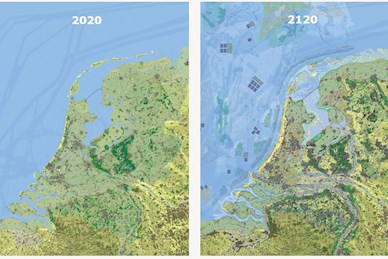
This is how green the Netherlands can be in 2120!🙌🌍 Greener cities, food and electricity production on sea and a sustainable water management. Check out the not only desirable but also POSSIBLE climate-proof plan developed by Wageningen University!
https://magazines.wur.nl/climate-solutions-nl/nederland-in-2120/
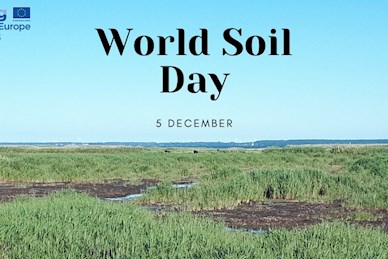
Using the World Soil day to put the importance of peat in the picture! Check out our Twitter to learn about the activities of our consortium on this day. @CarbonConnects
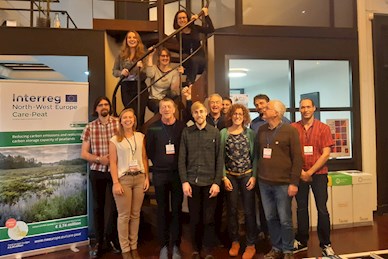
A very successful meeting with 4 Peat-project, to bundle forces, we discovered very promising opportunities! CCONNECTS CARE-PEAT CANAPE PEAT-RESTORE Some of our outcomes for cooperation in the near future: - Synchronize Partner meetings - Welcome eachother on workshops and fieldtrips - Joint final conferences in Brussels - Shared communication tool - Common Advisory boards - Common communication to send out strong messages to a broad audience - Student involvement Looking forward to the enrollment of our plans!
“Avoiding loss of high-carbon soils through peatland mapping and monitoring for climate action” Monday 02 December 2019 16:45–18:15 Madrid Climate Change Conference, COP 25, Room 1 Peatlands cover less than 3 percent of the Earth's surface but hold the largest terrestrial organic carbon stock in their soils. To avoid peatland drainage and the rapid decrease of their carbon storage and consequent greenhouse gas emissions, it is essential to know where peatlands are located by further develop national peatland maps. Peatland mapping is a solid base to advance with climate-smart policy frameworks, land use planning and monitoring. Latest experiences, technology and guidelines of peatland mapping, monitoring and management techniques will be shared and discussed for further application.
Speakers: Speakers at the event include representatives from Indonesia, Peru and the Democratic Republic of the Congo, Japan International Cooperation Agency (JICA), Hokkaido University, Global Environment Centre (GEC) Food and Agriculture Organization of the United Nations (FAO), and Greifswald Mire Centre. Moderated by UN Environment Programme.
Focus of the event: Peatlands cover less than 3 percent of the Earth’s surface but hold the largest terrestrial organic carbon stock in their soils. To avoid peatland drainage and the rapid decrease of their carbon storage and consequent greenhouse gas emissions, it is essential to know where peatlands are located by further develop national peatland maps. Peatland mapping is a solid base to advance with climate-smart policy frameworks, land use planning and monitoring. Latest experiences, technology and guidelines of peatland mapping, monitoring and management techniques will be shared and discussed for further application.
Hosts: GEC, Greifswald Mire Centre, JICA, FAO, Hokkaido University, UN Environment Programme. It is organized in the frame of the Global Peatlands Initiative with the support of IKI funded by German Ministry for Environment and International Fund for Agricultural Development (IFAD).
Links: www.greifswaldmoor.de www.gec.org.my www.jica.go.jp/english/index.html

Follow us at this event on Twitter @CarbonConnects
A very successful conference that allowed us to push our project one step further!
Making an impact and synergies were the main focus of this event.
Impact
At our project stand we presented not only the idea and approach of CarbonConnects, we brought some concrete products resulting from wet farming like isolation, a cattail example, food products from lisdodde, etc. On an interactive map we were able to show our visitors the 10 pilot sites.
Synergies
A very fruitful meeting was organised with CCONNECTS, CARE PEAT and CANAPE to plan our synergies starting now! Together we will send a strong message to policy makers to stress the importance of peat management
Check out the final agenda and discover other projects here: https://www.nweurope.eu/news-events/media-contacts/nwe-making-an-impact/

Carbon Connects 4th Partner Meeting On the 27th of November, partners of the project met in Stanhope, England to hold their 4th partner meeting hosted by the North Pennines AONB Partnership. The day started with a visit of the Pennine PeatLIFE site - Valance Lodge where peat restoration techniques have been demonstrated and evaluated as part of another project. Then, the partners visited the Carbon Connects Weardale demo site: a degraded site becoming drier due to historic loss of sphagnum caused by overgrazing, burning and drainage. Indeed, sphagnum is a key component to a fully functioning blanket bog, stabilising the bog surface, increasing surface wetness and re-invigorating peat formation. In the afternoon, project updates were discussed and guest speakers from iCasp, DigiBog Hydro and the Interreg North Sea Region – Topsoil Project were welcomed to bring different perspectives and expertise on peat restoration. AC3A held the final working session by first giving an overview of the pilot sites and engaging partners in finding common points, challenges, strengths and weaknesses across them, and then by exchanging views on the transnational Low-Carbon Business Modelling. The next day started with a visit to the Middlehope Natural Flood Management Site, followed by the discovery of the High Force Waterfalls in Teesdale. In the afternoon, a working session aiming at outlining a European Certificate of Wet-Agriculture took place. Partners gathered thoughts on the pros and cons of accreditation systems, payment systems, additionality and spatial scale. To finalise this successful meeting, partners discussed the Farmer-2-Farmer programme, the communication strategy, potential synergies with other projects, as well as long term goals.
Positive story about #peatland restoration in Scotland creating a vital carbon sink and a thriving habitat for a range of species https://www.theguardian.com/environment/2019/nov/27/scotlands-peat-bogs-reveal-their-secret-strength-carbon-aoe
" Turf is one of the least efficient fossil fuels as it emits high levels of CO2 per unit of energy used. Alongside that, intact peat lands play a role in flood management and protecting biodiversity, as well as being an excellent carbon sink."
Peat is vital in the fight against climate breakdown, we should not be using peat compost to improve the soil in our gardens, use other organic matter for this!👍 Only 4K more votes needed to have this discussed by the UK government! ➡️Sign now! https://petition.parliament.uk/petitions/263362
Follow or view the meeting here: https://webcast.ec.europa.eu/carbon-farming-schemes-in-europe-roundtable
The Carbon Connects Pilot Sites
The Carbon Connects consortium have selected representative pilot sites across NWE (eg. lowland bogs) and business model types (eg.crop type, credit scheme, etc) and set transnational requirements (pilot duration, C02 sampling methodology, etc) to jointly develop living labs.
The partners will design, implement and monitor pilot sites implementing low carbon land management agricultural practices and supported by sustainable business models.
These pilots have a two-fold impact:
- directly reducing C02 emissions through wet-agricultural practices and storage of carbon in biomass products
- regional flood mitigating effects due to changing water levels which benefit flood prone zones
DISCOVER THE CARBON STORAGE PILOT SITES IN EUROPE HERE ON AN INTERACTIVE MAP
PILOT SITE VALUE CHAIN ASSESSMENTS
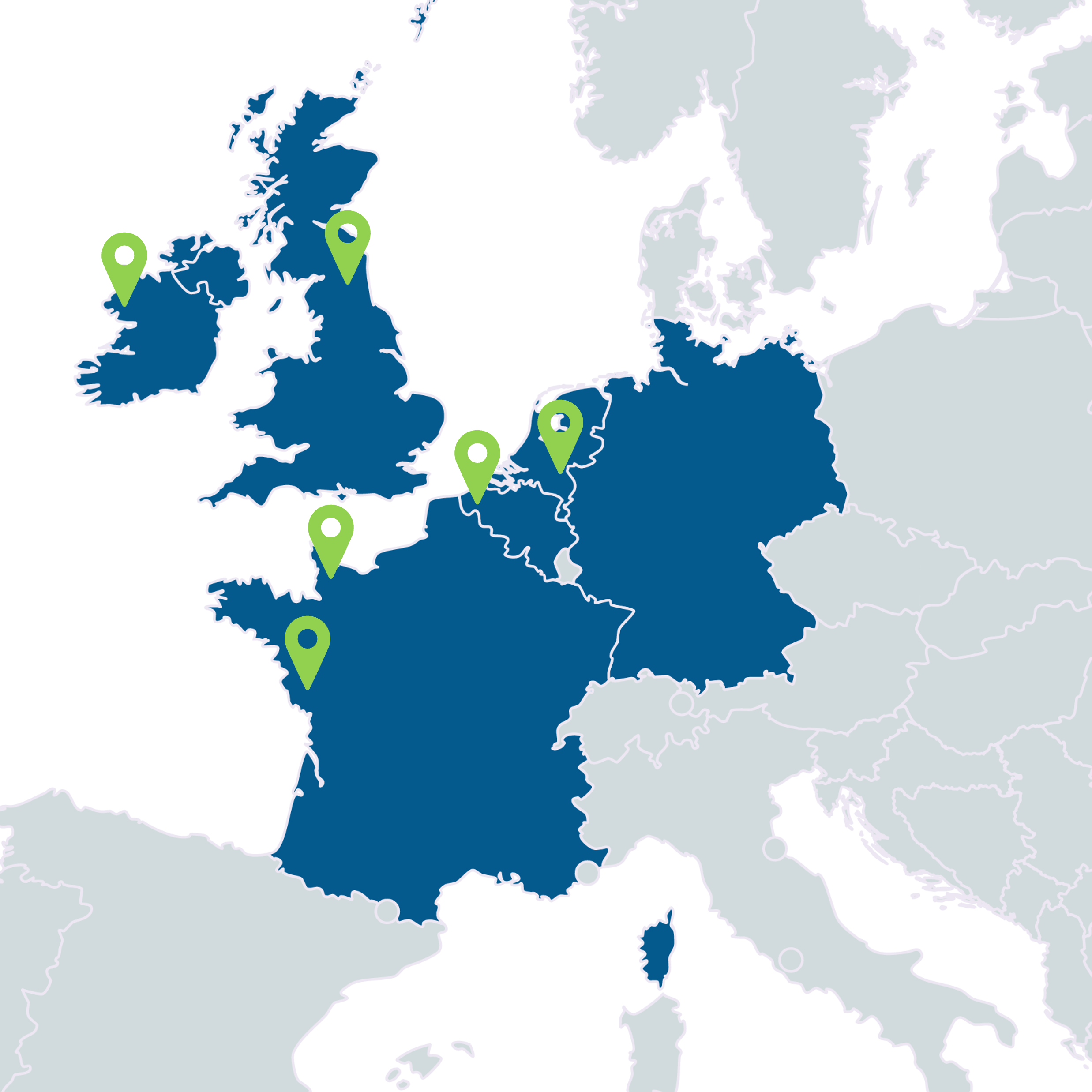
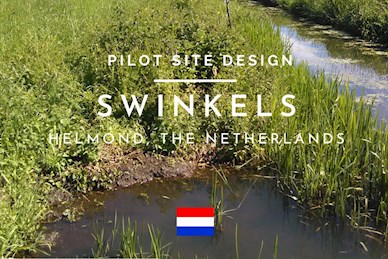
Information on the pilot site
Size: 1 ha
Crop Type: Cattail
Water level fluctuations: -10 and +20 cm
GOAL: Keep water table high and block the drainage ditches to reduce water loss by downward seepage for more stable ground water tables
Check this document for more information.
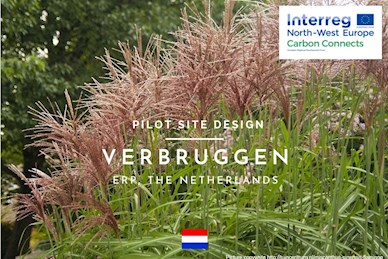
Information on the pilot site:
Size: 15 ha
Crop Type: Miscanthus
Innovative business model to grow Miscanthus to be used as substrate to grow biological mushrooms
Goal: Develop and test a business model producing the substrate for biological crops.
👉 More information here.
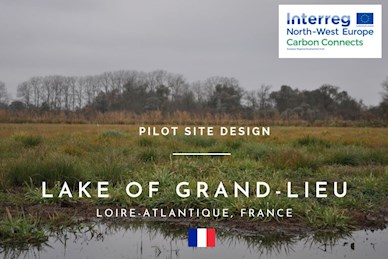
Information on the pilot site:
Size: 3000 ha
Crop Type: Grasses grow naturally, no cultivation
Water level fluctuations: 0,7-4 m, Grazing Cattle
Goal: Analyse what is the ideal level of carbon storage and the realistic one for maintaining human and agricultural practices
👉 More information here.
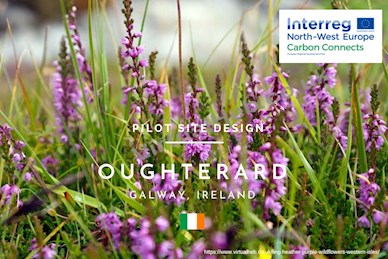
Information on the pilot site:
Size: 137 ha
Crop Type: Ling heather soft rush
Highly degraded and drained blanket because of extractions during the last 20-30 years for domestic and industrial purposes
Goal: Improving the water quality, enhancing the habitat especially for Pearl Mussel by having a good vegetated peatland located adjacent to a water body, supporting the landowners in quantifying and improving the Carbon Sequestration Potential
👉 More information here.

Information on the pilot site:
Size: 4.5 ha
Crop Type: Sphagnum
Upland blanket bog with degraded vegetation community caused by overgrazing, burning and drainage
Goal: Demonstrating cost effective Sphagnum inoculation on degraded peatland to improve condition, reduce carbon emissions and prevent further degradation and costly restoration works in fut.ure
👉 More information here.
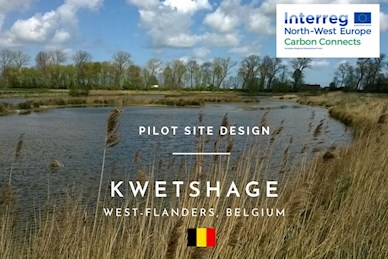
Information on the pilot site:
Size: 90 ha
Crop Type: spontaneously grown sedges, rushes, reed, grass and planting of reed and cattail for capturing nutrients in surface water
Land Use: Former agricultural area to be transformed into wetland, serving both nature goals and water management goals as a flooding area.
Goal: Rewetting the entire area, the creation of a high-quality reed marsh and the implementation of a sustainable management of habitats in cooperation with local farmers, stimulating the use of biomass from the wetland in farming practices
👉 More information here.

Information on the pilot site:
Size: 1000 ha
Crop Type: spontaneously grown reed, sedges, rushes, grass, willow
Land use: Nature Reserve with 50 ha large pond
Goal: Wetland restoration and rewetting. Increase of C-stock. Use of biomass for on-farm composting and compost use on arable land
👉 More information here.
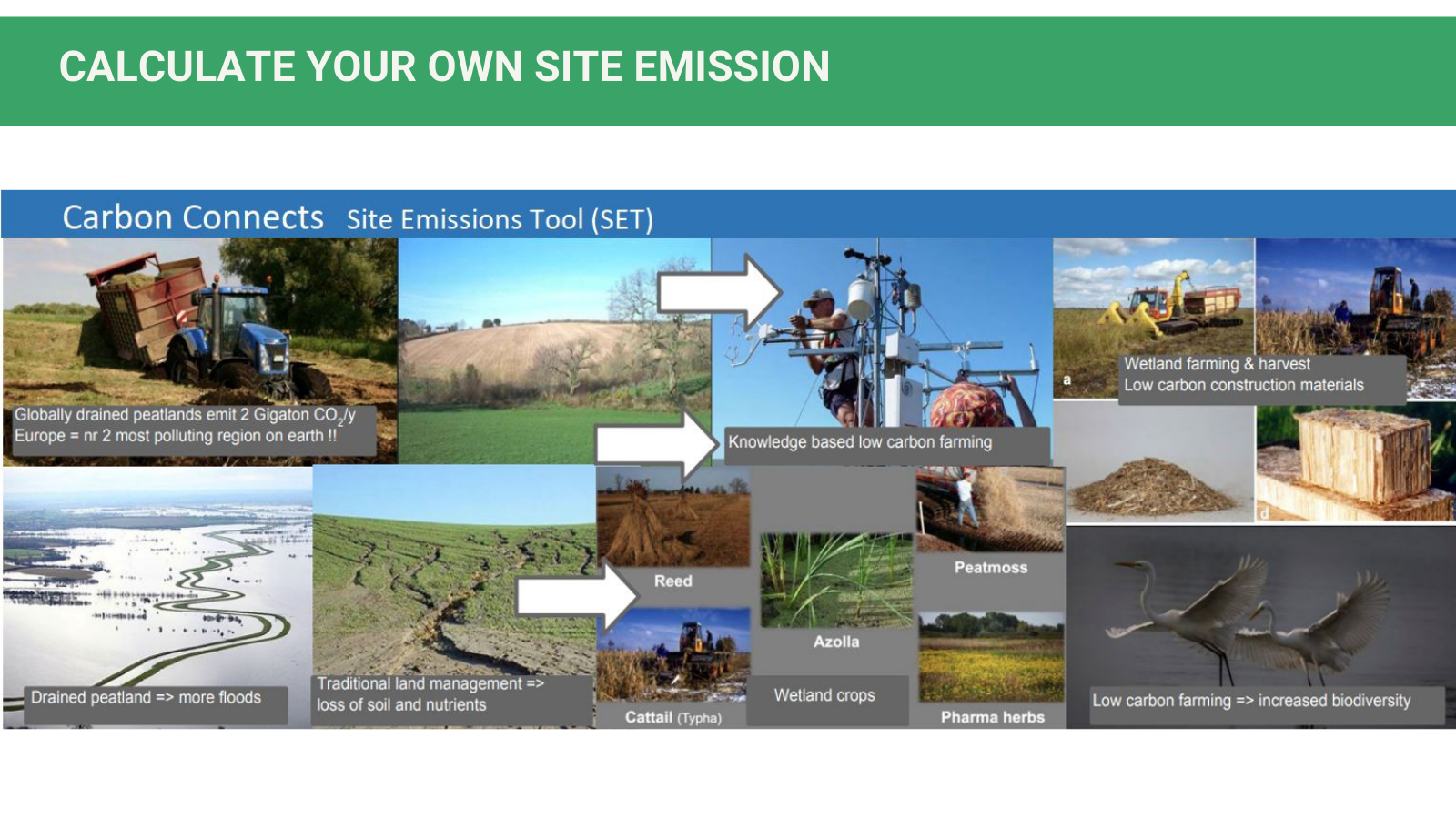
SITE EMISSION TOOL DOWNLOAD: Download the calculation sheet to calculate your emission
SITE EMISSION TOOL ONLINE: Discover how the calculator sheet looks like
User Manual
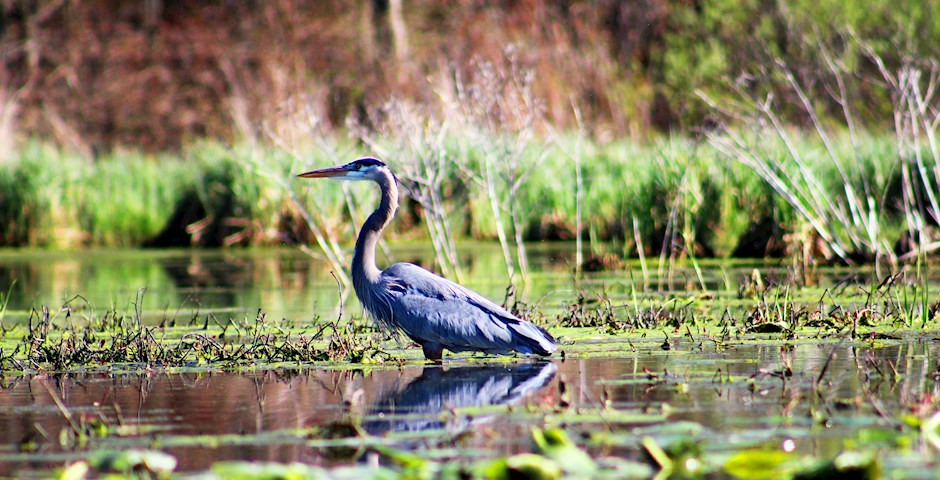
Uncovering the Benefits of Paludiculture: Radboud University releases study on Wetland Plant Development and its Impact on Methane Emissions. The study, titled "Wetland Plant Development Overrides Nitrogen Effects on Initial Methane Emissions after Peat Rewetting," highlights the potential of paludiculture in mitigating carbon loss from drained peatlands. The results indicate that vegetation, including Typha latifolia and Phragmites australis, can effectively reduce or prevent increases in methane emissions from rewetted peatlands.
The basis of a carbon credits certification for restoration & low carbon farming on peatlands in Northwest Europe
The Association of the Chambers of agriculture of the Atlantic Area (AC3A) and its European partners in the Interreg Carbon Connects project have published a carbon crediting methodology for valuing carbon and biodiversity rich areas. This report outlines the basis and methodology for a carbon crediting scheme that could be applied to peatlands sites in Northwest Europe to facilitate the contracting of payments for ecosystem services through peatland restoration, potentially integrated with low impact “carbon friendly” commercial farming. The aim of this methodology is to unlock new private sector funds through carbon credits for rewetting, restoration, and sustainable management projects through the adoption of complementary farming approaches in drained and degraded peatlands.
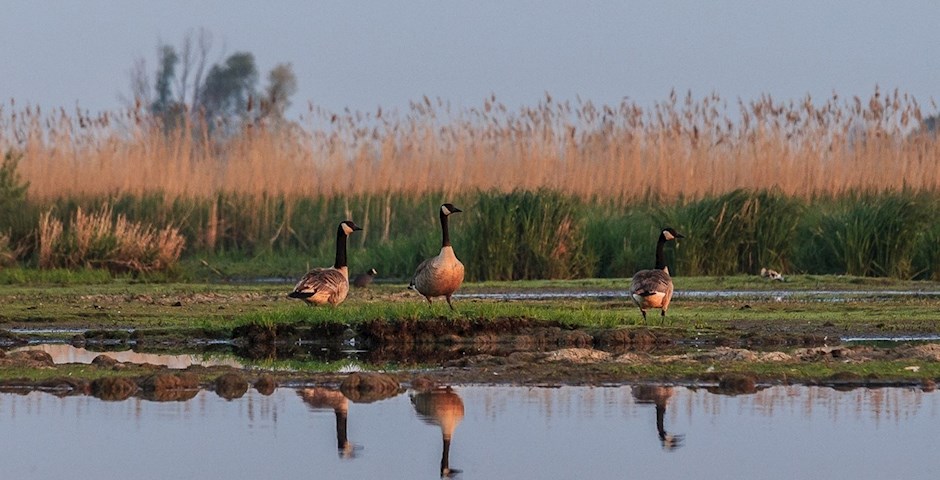

Near surface controls on peatland hydrology: implications for rapid adaptation and enhanced resilience to disturbances
The TUS Development Unit authors (Dr. Amey S. Tilak and Mr. Seamus Hoyne) collaborated with University of Birmingham, UK (Prof. Dr. Nicholas Kettridge) and quantified the sensitivity of vadose zone hydrology of northern peatlands to hydrophysical properties of the very near-surface peat layer and therefore the potential capability of at least some ecohydrological processes to respond rapidly to developments in peat properties as a result of restoration.
HYDRUS 1-D Monte Carlo simulations conducted of near-surface peat layers consisting of S. fuscum, S. magellancium and Amalgamated Sphagnum of different depths overlying degraded peat layer during periods of sustained drying.The modelling results showed that additions of newly developed Sphagnum peat layers, just a couple of centimetres in depth, significantly modified the near-surface hydrology of peat profiles and altered the time taken for reaching important ecohydrological threshold pressure heads.
The article was published in Ecohydrology on June 06, 2022 at https://onlinelibrary.wiley.com/doi/abs/10.1002/eco.2445
PEATLANDS ACROSS EUROPE: INNOVATION AND INSPIRATION
For World Peatlands Day five EU transnational projects exploring innovative measures to save our peatlands have released the Peatlands Across Europe: Innovation and Inspiration guide outlining their experiences and recommendations.
Authors: Bax & Company’s: Amber De La Haye, Cisca Devereux and Sebastiaan van Herk, with contributions from Carbon Connects, Care-Peat, DESIRE, LIFE Peat Restore, and CANAPE, the document aims to pave the way for future action on peatlands.
DOWNLOAD
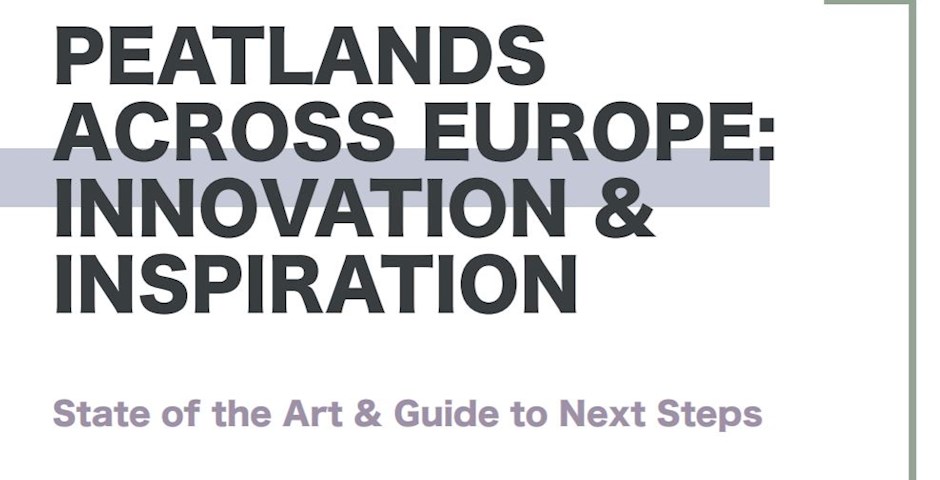

A new white paper on Carbon Credits and Ecosystem Services jointly launched by the EU Carbon-Connects & Care-Peat projects at the A3CA webinar 'Sustainable Farming for Peatlands', has found that with the right framework in place it should be possible to finance the restoration of damaged peatlands, significantly reduce Greenhouse Gas emissions and provide a good living for farmers all at the same time.
“Right at the start of the UN Decade of Ecosystem Restoration 2021-2030 and following on from the hugely successful Peatland Pavilion at COP26 two key EU Peatland Projects Carbon Connects and Care Peat have joined forces to develop a White Paper entitled TOWARDS A CARBON CREDIT & BLUE CREDIT SCHEME FOR PEATLANDS”, said Niall Ó Brolcháin of NUI Galway, the policy lead of the EU Care Peat project involving 5 European countries (IE UK NL BE FR).
The paper includes an analysis of a number of existing Peatland Carbon Credit schemes and accreditation standards and explores the potential of using Carbon Credits and other Ecosystem services to fund Peatland Restoration across Europe on a very large scale.
According to Valentina Sechi of Carbon Connects and Van Hall Larenstein University in the Netherlands, “The launch of this White Paper should provide a much-needed boost for peatland restoration in the EU where degraded Peatlands contribute more than 5% of all Greenhouse Gas emissions. Carbon Credits combined with payment for other Ecosystem Services can potentially provide farmers and other landowners with a good source of income from Peatland restoration projects. However, we have to take into account, the so-called paradox of additionality which can effectively reward bad environmental practice instead of good practice”.
The White Paper compares incomes from various types of farming common on peatlands across Europe with potential incomes from the sale of Carbon Credits and Ecosystem Services such as water storage and water purification.
Niall Ó Brolcháin concluded, “Many people are looking for ways that we can significantly reduce our Greenhouse Gas emissions quickly, cheaply and easily. Peatland restoration has the potential to reduce emissions across Europe by up to 5%. This is a project that we can all get behind and I see no reason why farmers, landowners and rural communities shouldn’t benefit significantly from it”.
Conclusions of the White Paper
- Current farming systems do not effectively support sustainable farming in Europe and they are heavily dependent on subsidies.
- Examples show that the sale of Peatland Carbon Credits is feasible if the right framework is put in place.
- International accreditation standards are too expensive for small peatland projects so an easy and cheap system is needed. Examples show that a site type methodology using proxy measurements may be highly effective.
- An integrated framework for Carbon Credits + Ecosystem Services is needed.
- Provision of subsidies for peatland restoration and maintenance is required while subsidies exist for other activities.
Read and download the report here
Authors: Carbon Connects Valentina Sechi, Jasper van Belle, Christian Fritz, Amey Tilak, Jeroen Geurts, Nina Roehrig, Peter Nailon, Kate Cartmell-Done, Weier Liu, Toine Smits, Maarten De Boever
Authors: Care Peat Niall Ó Brolcháin, Terry Morley, Chris Field, Jo Kennedy, Sarah Johnson, Simon Caporn, Carolina Halevy, Jim Ryan, Maurice Eakin, Fernando Fernandez, Clifton Bain, Christine Domegan, Shane McGuinness, Mark McCorry, Patrick Crushell
Quantifying moss moisture stresses in undrained, afforested and rewetted peatlands located in Republic of Ireland using laboratory measurements and computer modelling
The TUS DU authors (Dr. Amey S. Tilak and Mr. Seamus Hoyne) collaborated with University of Limerick (Dr. Ken Byrne), Centre for Ecology and hydrology, UK (Dr. Jonay Jovani-Sancho) and Trinity College (Dr. Matthew Saunders) and quantified the ecohydrological thresholds for sphagnum recolonization and regrowth on undrained, afforested and rewetted peatlands located in Republic of Ireland.
The article was published in Ecohydrology.
Read and download the article here

Relive the Sustainable Peatlands Conference
Visit the conference website for replays, outcomes and pictures HERE
The CANAPE & C-Connects Sustainable Peatlands Conference was a brilliant coming together of people across the field. To ensure the event has a lasting legacy, we are sharing the recordings and outcomes of the event.
Our event took place in Leeuwarden on the 13th to 15th of October 2021, with 6 sessions over 2 days, with over 40 speakers. Fortuitous timing with Covid levels allowed us to have an in-person event, with some of us meeting for the first time in nearly 2 years. However, aware that not everyone would want to travel, we held it as a hybrid event, with large numbers joining online. Over 70 people came together in person, with another 100 joining online.
We had two days of talks, which can be viewed at our YouTube Channel - followed by a day of site visits. For the full list of recorded talks, please scroll to the bottom of the page.
The full conference report is available to be read here.
Our event concluded with a Day of Field visits, with groups going to Alde Feanen and Die Wieden to see practical restoration efforts on the grounds.
Main Outcomes
The conference covered the full range of wetland restoration and management, from the design and set-up of a project, capturing the benefits, and securing the funding needed to make the change.
Building from the widely accepted premise that there must be significant wetland rewetting for the world to meet its climate targets, we explored the challenges of monitoring and how to ensure consistent & affordable reporting for wetland sites. Another key area of focus was affording the rewetting, whether this is through Paludiculture, or through alternative business models such as carbon credits and other Payments for Ecosystem Services.
The recorded talks, covering these topics and more, are listed below.
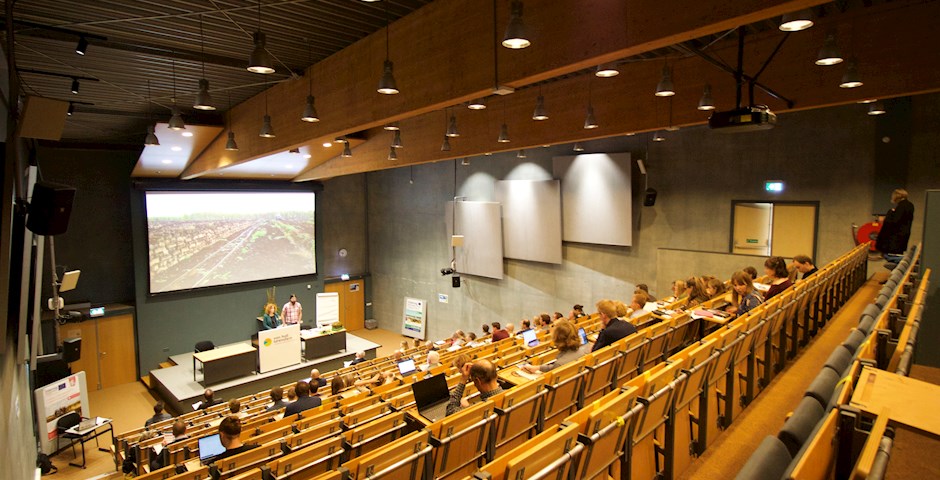
| Speaker | Presentation Title | Video Link |
| Dr Hans Joosten | The age of rewetting (Keynote Presentation) | https://youtu.be/xyLQJQNuRQU |
| Jasper van Belle | Does spatial variation in a shallow peat lake offer opportunities for restoration? | https://youtu.be/vccAlRETZfk |
| Emiel Galetzka | Zuidlaardermeer Works | https://youtu.be/G4X5IOZDu5I |
| Dr Dan Hoare | Hickling Broad Restoration | https://youtu.be/1USG3d41hIU |
| Sarian Kosten | Greenhouse gas emissions from inland waters: quantification and potential mitigation measures | https://youtu.be/tF0ylk2CMGg |
| Dr Mark McCorry | Bord na Mona on new approaches to peatland rehabilitation | https://youtu.be/kH6zxPWNV28 |
| Dr Ivan Metrop | Typha cultivation: do's and don'ts | https://youtu.be/emknOBftVTM |
| Andrea Kelly | Horsey Wetland | https://youtu.be/MEWVx__cPkE |
| Peter Hahn | Store Vildmose | https://youtu.be/tF0ylk2CMGg |
| Jasper van Belle | User-friendly GEST and IPCC-based modelling to calculate Carbon credits | https://youtu.be/58PoQWQ_TFA |
| Dr Laurent André | Emissions of GHG from peatlands : a tool for managing scenarios of restoration | https://youtu.be/XsZesuJi4zo |
| Dr Amey Tilak | Water movement processes with the drained blanket peatland located in Ireland | https://youtu.be/Szw0BV6y7YA |
| Dr Annieke Borst | Products from Peatlands | https://youtu.be/KHrehVaEupo |
| Andrea Kelly | Charcoal from Waste wood | https://youtu.be/ZRM1Uq04eIc |
| Peter Nailon | Upland Peatland Business Models | https://youtu.be/Iz64b19AMG8 |
| Patrick Crushell | Ecosystem services business model on Irish peatlands | https://youtu.be/xBBmGkHKNv8 |
| Harry Mach | Presentation of Pocket Guide | https://youtu.be/uXwSms2Ahgc |
| Dr Rob Collins | Restoration and Monitoring of a UK Coastal Fen | https://youtu.be/OPyoXyp_2LA |
| Niall O'Brochlain | C-credit scheme in peatland | https://youtu.be/_U7wVRVTPZk |
| Dr. Nina Röhrig | Transitioning to new business models: rewetting | https://youtu.be/xws6aL4slNI |
| Wilfried Heijnan | Valthermond Peatland Vision | https://youtu.be/xws6aL4slNI |
| Bert van de Wiel | Common Ground: resistance and support in the Frisian peat meadow landscape transition | https://youtu.be/-qV3V09E3QQ |
| Job van de Crommert | Towards sustainable agriculture peatland management: a policy analysis on the Frisian Veenweidegebied | https://youtu.be/k04XUrPPQOg |
| Dr Laura Herzog | Design for a Transformation Process in the Context of Climate Policy | https://youtu.be/Kjv_5giT4m0 |
04 January 2022 - Published by Harry Mach
Project Results
The total CConnect’s total GHG emission reduction (from the original phase of the project 2018-2021) is 84 tCO2 -eq. Without further actions, this number will develop into 87 tCO2 -eq/yr emission reduction by 2030, and 169 tCO2 - eq/yr from 2035 on. Much more indirect GHG emissions reduction, although harder to quantify, can also be linked to the CAP phase, thanks to the leverage funding to deliver more peatland restoration and developed new relationships with investors on larger scale restoration project, + the coaching/training/matching established to empower farmers to reach out to market actors in order to cooperate on greener methods for the foreseeable future.
Finally, the Capitalisation phase of the project Carbon Connects successfully contributed to connecting farmers and landowners to market players in order to effectively bridge the current financial gap existing to support the transition towards sustainable peatland management practices.
During the Capitalisation phase, partners developed a market scaling plan, a framework for market access and engagement, 2 financing and scaling mechanisms, and a Farmer2Market methodology. Carbon Connects connected 57 farmers and landowners to 87 market actors and investors in close to 40 events. This led to close to €2.3 million leveraged for the restoration of peatlands, harnessing their role as carbon sinks through carbon credits or their value when it comes to water filtration and reduction of flood risks. A diverse range of private stakeholders were involved, ranging from large corporations (e.g. The Coca-Cola Foundation) to insurance companies, and nature conservation organisations. A 3rd tier network of over 128 peatland actors was created through its “Farmer 2 Market Programme”.
Furthermore, 101 jobs were maintained since the project started and 15 jobs were created, with many more to come in the short-term future!
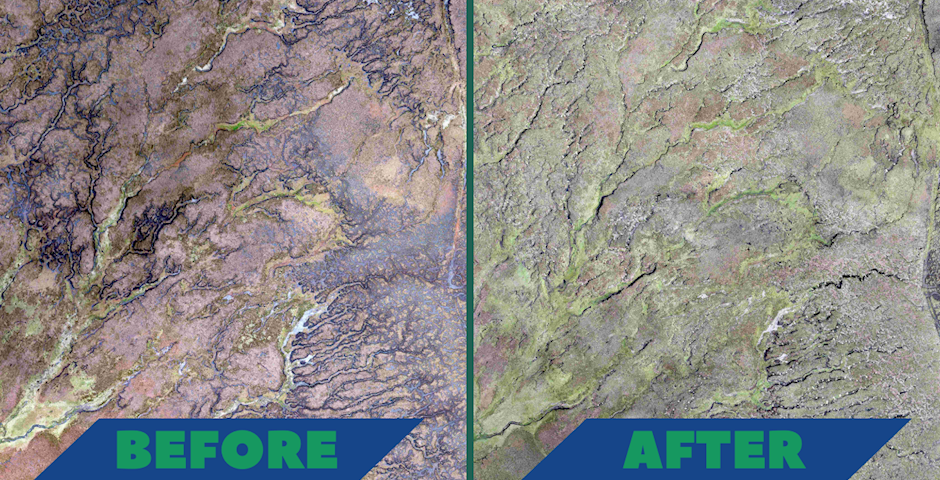
2020 vs. 2023
In 2020, restoration works started on the upland peatland site in County Durham, and the change we've observed over the past three years is remarkable. When it first started aerial photographs revealed a landscape in desperate need of restoration. However, through the dedicated and collaborative efforts of numerous stakeholders, including corporate investors from the Cconnects F2M programme, we've had the privilege to witness this transformation.
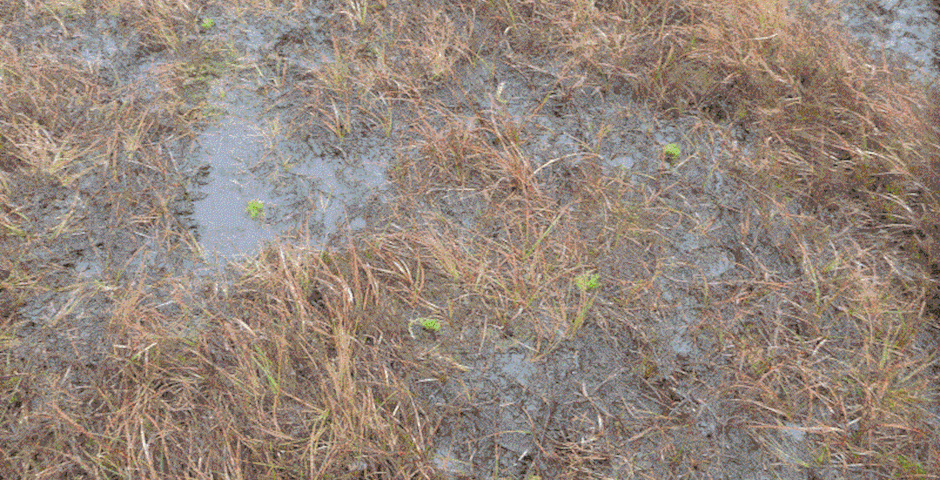
Planting Spaghnum Plugs and Clumps
On one of the pilot sites of Carbon Connects, a degraded upland blanket bog in the North Pennines, spaghnum plugs and clumps were planted in October 2020. On the site, patches of bare peat had been appearing for some time and the vegetation cover and spaghnum mosses were decreasing. The idea is to intervene at this early stage of the degradation to prevent the situation from worsening and the need for large-scale restoration work in bare peat later on. In two years, as you can see in the picture below, evolution can be observed as the cuttings and clumps have grown larger and started to expand.
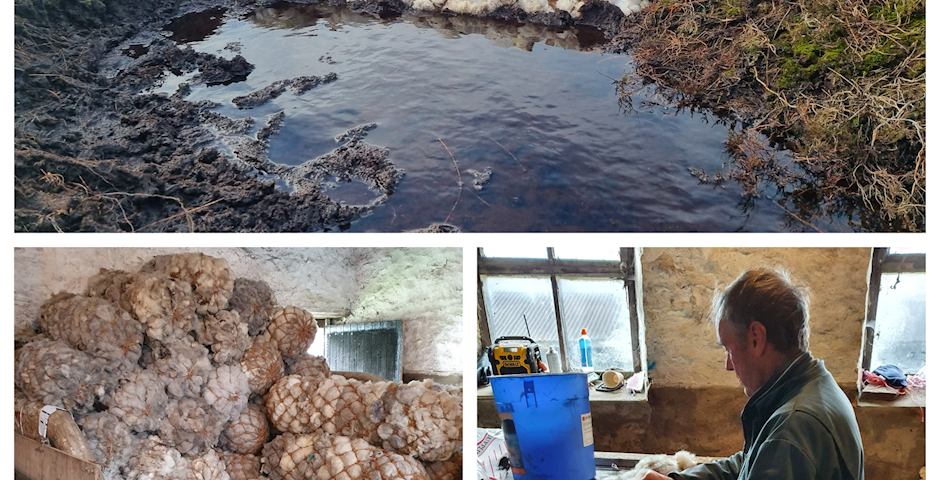
Sheepskin as a leak dam
These are some photos of a local farmer involved in the Carbon Connects project. He made rolls from his sheepskin to test as an alternative to the coir rolls commonly used as leak dams in peatlands. 150 of these wool rolls were installed on a bare bog at Teesdale in the North Pennines. The wool was put into coir nets to form the rolls and then dug into the peat and secured with wooden stakes. The hope is that they will slow water flow out of the peat, retain sediment, raise water levels and promote revegetation. If successful, they would provide a brilliant use for the wool, which currently has a very low market value, and would reduce the carbon footprint of restoration as they can be sourced locally.



